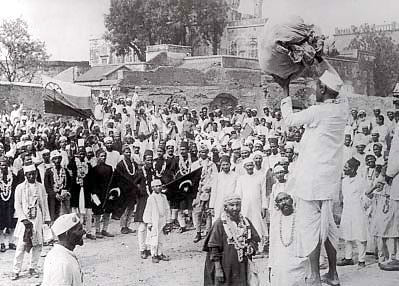Etawah is located in Uttar Pradesh and forms a part of the Kanpur Division. In its shape it looks like a parallelogram. Etwah is bounded on the north by the districts of Farrukhabad and Mainpuri, while the small extent of western border adjoins tahsil Bah of the Agra district. The major rivers that flow through Etwah are Chambal and Yamuna. The average annual rainfall in the district is 792 mm. During the rainy season the relative humidity is generally high being over 70%. There is a steady increase in temperature after February. May is the hottest month. The nights are warmer in June than in May. The heat in the summer is intense and the hot, dry and dust-laden westerly winds, which are common in the hot season, make the weather severely trying. During the cold season the district as affected by cold waves and fog and the minimum temperature occasionally goes down to 3 °C.
History of Etwah
In 1914-15 Etwah became the center of revolutionary activity when Gendalal Dixit organized the Shivaji Samiti with the object of liberating the country. Gendalal Dixit had also organized a group of young men called "Matri-Vedi".
 When Gandhiji emerged to the forefront after returning from the first session of the Congress that was held at Lucknow, a large number of people came to the forefront to take part in the freedom struggle. The national movement had so far been confined to the urban intelligentsia but his appearance on the Indian political scene gave a new direction and meaning to the freedom struggle, which was now carried to the masses. In Etawah a large number of persons enrolled themselves as volunteers.
When Gandhiji emerged to the forefront after returning from the first session of the Congress that was held at Lucknow, a large number of people came to the forefront to take part in the freedom struggle. The national movement had so far been confined to the urban intelligentsia but his appearance on the Indian political scene gave a new direction and meaning to the freedom struggle, which was now carried to the masses. In Etawah a large number of persons enrolled themselves as volunteers. In 1920, the Congress declared "the attainment of Swarajya by the people of India by all legitimate and peaceful means." Mahatma Gandhi launched his famous Non-co-operation Movement all over the country in August of that year. In Etawah the response of the people to this movement was enthusiastic and widespread. In 1920-21 the district Congress Committee was formed with Maulana Rahmat Ullah as its president. He was soon arrested by the authorities.
In 1922, Mahatma Gandhi suspended the Non-co-operation Movement. The movement roused the consciousness of the people against alien rule and gave them a new confidence and courage to fight it. In the council election, the Congress won a seat in the council election.
In 1925, Jyoti Shankar Dixit of Lalpura village and Mukandi Lal of Etawah city were arrested in connection with the Kakori Conspiracy case but were later released. In 1928, when the Simon Commission visited India it was subjected to boycott all over the country and Jawaharlal Nehru visited Etawah in this connection.
On November 23, 1929 Gandhiji visited the district and addressed a large public meeting at Auraiya. In 1930, the Civil Disobedience movement was started in Etawah. The first stage was violation of the Salt Act. Many people were arrested and lathi charged. The students of the Government Intermediate College, Etawah, were lathi charged for hoisting the Congress flag on the college building. Thousands assembled to protest against this act of oppression.
The people of the district kept up their non-violent struggle as per the instructions of Gandhiji. British goods were boycotted and foreign clothes were burnt publicly. A large number of peasants also joined the Congress. All the political prisoners were released as a result of the Gandhi-Irwin Pact in 1931.
The Quit India Movement of 1942 received wide support from people in the district. Congress flag was hoisted on all Congress offices and on numerous private buildings. There were mass arrests, imposition of collective fines, and lathi charges.
There was universal discontent against British rule and was the indication that British could no longer rule India. In 1947, by passing the Indian Independence Act, the British decided to quit India.
On August 15, 1947, the country was liberated from the British rule. The district of Etwah enjoyed the freedom movement along with India. The private and government buildings of Etwah were hoisted with flags.
The Government honored 548 freedom fighters of Etwah with Tamra Patras. This is a number, which any district can boast of without exaggerating its role. This indicates that the people of Etwah are inborn patriots.

No comments:
Post a Comment